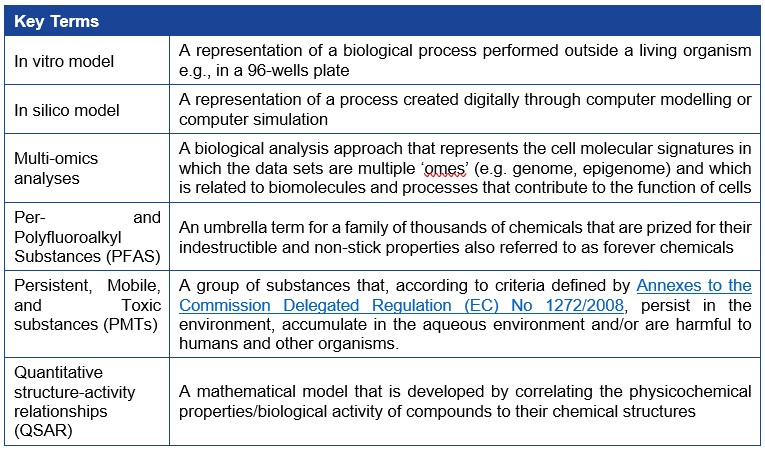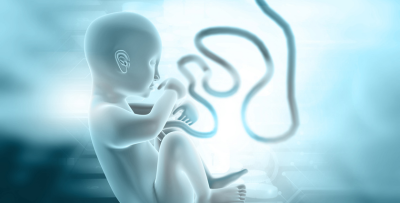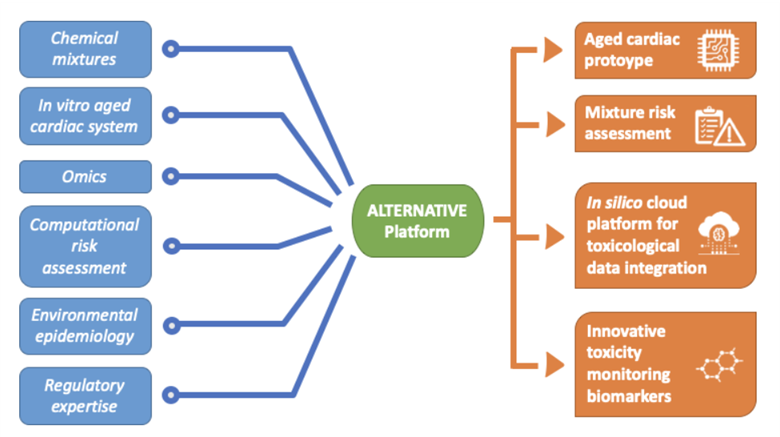Details
- Publication date
- Source
- Green Deal Projects Support Office
There is an increasing need to develop new technologies and approaches to minimise the risk to human and environmental health from chemical exposure to Persistent, Mobile, and Toxic substances (PMTs). Currently, only PMTs that accumulate in living organisms (a process called bioaccumulation) are regulated. However, it is now recognised that PMTs that remain in the water phase and can move over wide distances are equally problematic. Digital hybrid systems and tools are beginning to play an important role in minimising the human health risks posed by PMTs.
Digital tools include models, artificial intelligence, and machine learning systems which provide the ability to process large data sets that existing technologies either struggle with or are unable to process. Digital systems not only offer novel data processing capabilities but can significantly reduce the direct and indirect costs of research and refine, reduce, or replace the need for animal testing.

Table 1. Key terms summary.
Green Deal Call-funded projects taking a digital systems’ approach to delivering the Green Deal
Four projects – ALTERNATIVE, LIFESAVER, PANORAMIX and PROMISCES – funded under the Horizon 2020 Green Deal Call are undertaking research that aims to support the EU’s green transition. With the support of the Green Deal Projects Support Office, the projects are collaborating to maximise their impact towards a common objective of minimising the risk to human and environmental health from chemical exposure. One way that the projects are achieving this is by employing a digital systems approach – developing digital tools – to assess and monitor the risks to human and environmental health posed by harmful chemicals. By doing so, the projects are expanding our knowledge about chemicals and contaminants that are harmful to our environment and improving our understanding of how they can impact our health.

Infographic of Green Deal Call-funded projects developing digital tools to address chemical threats to human health. Click to enlarge the image.
ALTERNATIVE
ALTERNATIVE is developing an innovative platform (Figure 1) and applying an integrated approach to assess and test the cardiotoxicity of chemicals and their risk to human health. This will strengthen the capacity of regulators and industry to effectively prevent cardiotoxic exposures to industrial chemicals and pharmaceuticals.
Figure 1. The ALTERNATIVE platform concepts. Source: ALTERNATIVE.
The ALTERNATIVE platform has been constructed using research fed directly from a series of Work Packages. The platform consists of three key systems developed to improve our understanding of the regulatory utility of complex in vitro 3D models compared to simpler 2D models:
- a 3D tissue engineering in-vitro model mimics young and aged human cardiac tissue that is integrated into a bioreactor with sensors to replicate the cell environment.
- cellular systems are monitored and analysed using classic biological markers of toxicity and by applying multi-omics approaches, such as transcriptomics, proteomics, and metabolomics.
- a machine learning (ML) in silico model brings together these systems and analyses and integrates the data collected with information already available from established databases. The ML in silico tool will then provide a small set of potential biological toxicity markers to be validated and provide a new approach for the evaluation of chemical mixtures assessment.
Together, this 3D cardiac tissue system and ML in silico model form a novel risk assessment tool that will provide close-to-real scenario information on toxicity. The platform will thus facilitation the evaluation of unpredictable toxicity caused by synergistic effects of different chemicals, worsened by the human ageing process. These outputs serve as an instrument to achieve compliance with current regulations regarding the assessment of chemical compounds and help to guide the application of newly developed methods.
LIFESAVER
LIFESAVER is conducting research, which aligns with the ALTERNATIVE project, on in vitro systems to minimise the risk of chemical exposures (e.g. PMTs) to human health. Where ALTERNATIVE’s research focuses on the cardiotoxic effects of chemicals, LIFESAVER’s research is aimed at predicting the risk of chemicals for unborn foetuses. The project has developed a hybrid digital in silico/in vitro (biodigital) twin modelling system, which combines several innovative technologies to emulate prenatal conditions in the vicinity of the uterine/placental interface.
Research focuses on experimental screening and digital pre-screening, alongside the digital analysis of chemicals and pharmaceuticals’ potential to cross placental tissues barriers. The overarching aim of the project is to reduce neonatal and infant death rates within Europe by generating and validating data that forecasts the potential effects of environmental pollutants and drug treatments on pregnant women. Among LIFESAVER’s core principles is the objective to achieve a healthier quality of life for babies (Figure 2).
Figure 2. LIFESAVER’s core concepts. Source: LIFESAVER.
To achieve its objectives within the project’s timeframe, LIFESAVER is focusing its research on detailed analysis of the placental tissues’ barrier functions, rather than on maternal/foetal ADME (absorption, distribution, metabolism, excretion) mechanisms or toxicology (teratogenicity, genotoxicity etc.) as these would require specific and separate studies for each chosen compound.
LIFESAVER’s new, science-based digital tool will offer a solid basis for existing and new compounds’ risk classification, regulations, and risk assessment/mitigation measures for pregnant women and foetal health. The tool also offers new market opportunities in digitised solutions for improved health and well-being of pregnant women. Moreover, it will strengthen the competitiveness and growth of companies that work in environmental, medical and lab data analysis, bioprinting, tissue and cell engineering, and pharmacology. In the future, the LIFESAVER platform will enable uteri functionalities for the testing of all drugs and chemicals and ultimately reduce national healthcare costs.
PANORAMIX
PANORAMIX aims to protect the health of EU citizens and the environment by developing a set of new, concrete tools for conducting mixture risk assessments; developing a novel scientific framework to understand and quantify the risk of chemical mixture exposure across the environment-food-human continuum; and evaluating the risk to human health from chemical mixtures by focusing on case studies of real-life scenarios.
 To achieve these aims, PANORAMIX has developed new digital tool – the Chemical Mixture Calculator 2.0. The Chemical Mixture Calculator 2.0 software was developed by partner DTU and can be used to predict the effects of chemical mixtures across the environment-food-human continuum. It groups substances by cumulative assessment related to their effects on different biological systems. The new version 2.0 of the software hosts additional data and an updated interface.
To achieve these aims, PANORAMIX has developed new digital tool – the Chemical Mixture Calculator 2.0. The Chemical Mixture Calculator 2.0 software was developed by partner DTU and can be used to predict the effects of chemical mixtures across the environment-food-human continuum. It groups substances by cumulative assessment related to their effects on different biological systems. The new version 2.0 of the software hosts additional data and an updated interface.
PROMISCES
PROMISCES (Preventing Recalcitrant Organic Mobile Industrial chemicalS for Circular Economy in the Soil-sediment-water system) strives to increase the circularity of natural resources by overcoming barriers associated with the presence of PMTs in five different circular economy routes in the soil-water-sediment system (Figure 3). To achieve this aim, PROMISCES is applying a hybrid approach to their research, combining real-world data with advanced computer models and AI.
Figure 3. Overview of the five different circular economy routes in the soil-sediment-water system. Source: PROMISCES.
While digital systems exist to assess and manage the environmental and human health risk associated with exposure to PFAS and PMTs, PROMISCES is creating new tools and methods to evaluate the efficiency of remediation, including lab-based tests and numerical models to better understand toxicity. PROMISCES is also developing strategies to quickly identify potentially harmful chemicals and prioritise them. PROMISCES aims to improve our capacities of the risk assessment of these substances, even when data is limited, and improve our decision making to protect public health and environment.
In addition, PROMISCES is developing innovative and integrative modelling approaches to predict the fate and transport pathways of PFAS and PMTs substances in the soil-water-sediment system. By combining specific monitoring data on sources or emission and the transport of PMTs (e.g. real-world data) with open-source modelling tools, PROMISCES is able to understand and predict the behaviour of these substances in surface and groundwaters. In addition, quantitative structure-property relationship (QSPR) models, in silico similarity tools, and AI have been applied to advance knowledge on PMTs’ properties.
Conclusion
Expected human population growth is set to exacerbate the problem of chemical pollution in soil-sediment-water environments (e.g. PFAS and PMTs) and the subsequent impacts on human and environmental health.
The EU is prioritising the reduction of water and soil pollution and the subsequent risk to human health. To achieve this, the EU Horizon 2020 Green Deal Call encourages the innovation of digital technologies aiming to reduce the chemical risks to environmental and human health. Four projects that have received funding from this initiative – ALTERNATIVE, LIFESAVER, PANORAMIX and PROMISCES – are beginning to lay the foundations of sustainable change for the chemical industry.
The research conducted by these projects emphasises the benefits of employing digital tools and systems, particularly: their ability to undertake comprehensive data processing tasks, increased cost-efficiency, and improved standards. The projects are playing a pivotal role in demonstrating the value of novel digital system approaches (including hybrid approaches) and the crucial role these systems will play in new chemical risk detection, prevention, treatment, removal, and remediation processes, both in the near and far future.




